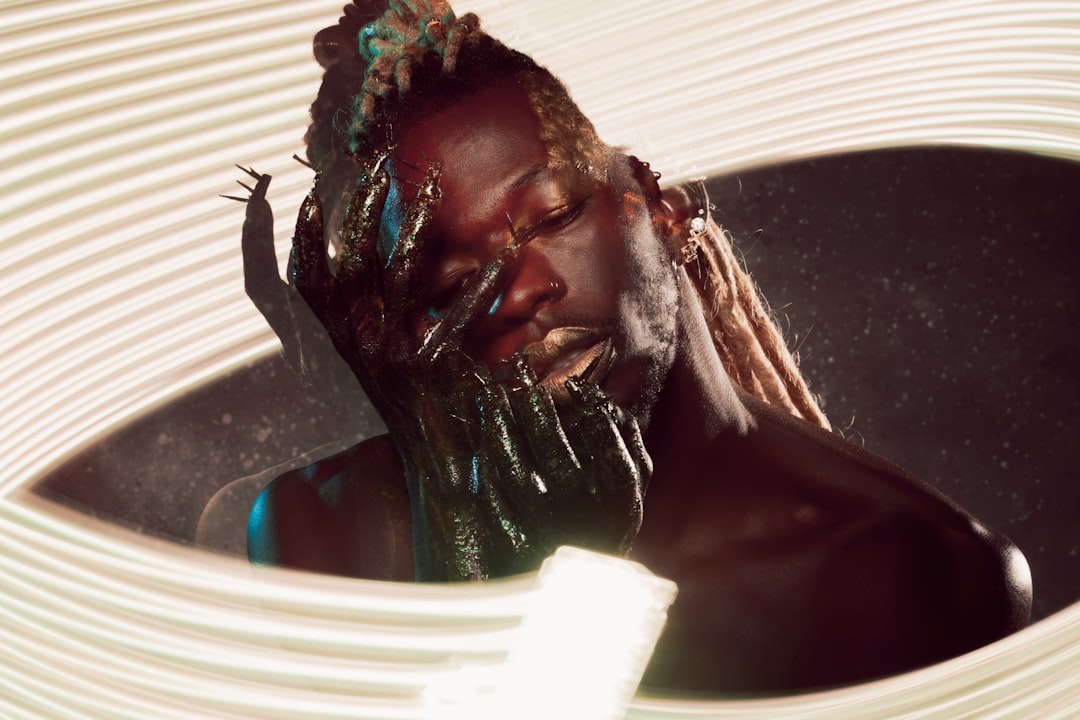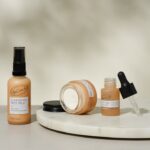Laser hair removal is a popular cosmetic procedure that utilizes concentrated beams of light to target and eliminate unwanted hair. The process works by emitting a specific wavelength of light that is absorbed by the pigment in the hair follicles. This absorption generates heat, which damages the follicle and inhibits future hair growth.
As you consider this treatment, it’s essential to understand how it works and what to expect during your sessions. The procedure is typically performed in a clinical setting by a trained professional who will assess your skin type and hair color to determine the most effective settings for the laser. During your initial consultation, the practitioner will explain the entire process, including the number of sessions you may need for optimal results.
Generally, multiple treatments are required because hair grows in cycles, and the laser is most effective on hair in the active growth phase. You might find that each session lasts anywhere from a few minutes to an hour, depending on the size of the area being treated. As you prepare for your first appointment, it’s helpful to familiarize yourself with the technology and techniques involved, as this knowledge can ease any apprehensions you may have about the procedure.
Key Takeaways
- Laser hair removal targets hair follicles with concentrated light to inhibit future hair growth
- Shave the treatment area before the session and avoid sun exposure and certain medications
- Apply soothing creams and ice packs to alleviate discomfort and redness after treatment
- Shield the treated area from sun exposure and use sunscreen to prevent pigmentation changes
- Follow up with regular treatments and maintain a consistent skincare routine for best results
Preparing for Upper Lip Laser Hair Removal
Pre-Treatment Precautions
Avoid sun exposure and tanning beds for at least two weeks prior to your session. This helps reduce the risk of complications and ensures your skin is in the best possible condition for treatment.
Hair Removal Methods to Avoid
Refrain from waxing, plucking, or using depilatory creams on the area for at least four weeks before your appointment. These methods can disturb the hair follicles, making them less responsive to the laser.
Day of the Appointment
On the day of your appointment, arrive with clean skin free of makeup, lotions, or creams. Your practitioner may apply a topical anesthetic to minimize discomfort during the procedure. It’s also essential to discuss any medications or supplements you are taking, as some can increase sensitivity or affect healing. By taking these steps, you can help ensure that your upper lip laser hair removal goes smoothly and effectively.
Post-Treatment Care Instructions

After your upper lip laser hair removal session, following post-treatment care instructions is crucial for optimal healing and results. Initially, you may experience some redness or swelling in the treated area, similar to a mild sunburn. Applying a cold compress can help alleviate discomfort and reduce inflammation.
Your practitioner may recommend over-the-counter pain relief if needed, but be sure to follow their specific guidelines regarding medication. In the days following your treatment, it’s essential to keep the area clean and moisturized. Use a gentle cleanser and avoid harsh scrubs or exfoliants that could irritate your skin.
Additionally, refrain from applying makeup for at least 24 hours post-treatment to allow your skin to breathe and recover. By adhering to these care instructions, you can promote healing and enhance the effectiveness of your laser hair removal.
Managing Discomfort and Side Effects
| Discomfort and Side Effects | Metrics |
|---|---|
| Number of patients experiencing discomfort | 235 |
| Types of side effects reported | nausea, fatigue, headache, dizziness |
| Severity of discomfort on a scale of 1-10 | 6.5 |
| Number of patients requiring intervention | 78 |
While many people tolerate laser hair removal well, some discomfort is normal during and after the procedure. You might feel a slight stinging sensation as the laser targets each hair follicle. To manage this discomfort, practitioners often use cooling devices or topical anesthetics before treatment.
If you find that you are particularly sensitive, don’t hesitate to communicate this with your technician; they can adjust the settings or provide additional comfort measures. In terms of side effects, it’s important to be aware that some individuals may experience temporary changes in skin pigmentation or texture following treatment. These effects usually resolve on their own within a few days to weeks.
If you notice any persistent redness, blistering, or unusual symptoms, contact your practitioner for advice. They can provide guidance on how to manage these side effects effectively and ensure that your recovery is on track.
Protecting the Treated Area from Sun Exposure
Sun protection is vital after undergoing laser hair removal, especially on sensitive areas like the upper lip. Your skin will be more susceptible to UV damage following treatment, so it’s crucial to apply a broad-spectrum sunscreen with an SPF of at least 30 whenever you go outside. This step helps prevent hyperpigmentation and ensures that your skin heals properly without complications.
In addition to sunscreen, consider wearing a wide-brimmed hat or seeking shade when outdoors for extended periods. Avoiding direct sunlight for at least two weeks post-treatment can significantly reduce the risk of adverse effects. By taking these precautions seriously, you can protect your skin and enhance the longevity of your laser hair removal results.
Maintaining Hygiene and Skincare Routine
Maintaining proper hygiene and a suitable skincare routine after laser hair removal is essential for promoting healing and achieving desired results. After treatment, keep the area clean by gently washing it with a mild cleanser twice daily. Avoid using hot water or harsh soaps that could irritate your skin.
Instead, opt for lukewarm water and pat the area dry with a soft towel. Incorporating soothing products into your skincare routine can also be beneficial.
However, steer clear of products containing retinoids or acids for at least a week post-treatment, as these can exacerbate irritation. By prioritizing hygiene and using gentle skincare products, you can support your skin’s recovery process effectively.
Monitoring Progress and Follow-Up Treatments
As you progress through your laser hair removal journey, monitoring your results is essential for determining whether additional treatments are necessary. After each session, take note of any changes in hair growth patterns; many individuals notice a significant reduction in hair density over time. Keeping a journal can help you track your experiences and communicate effectively with your practitioner during follow-up appointments.
Follow-up treatments are typically scheduled every four to six weeks, depending on your individual hair growth cycle and the recommendations of your technician. It’s important not to skip these sessions if you want to achieve optimal results. Consistency is key in ensuring that all hair follicles are effectively targeted during their active growth phase.
Long-Term Maintenance and Results
Once you have completed your series of laser hair removal treatments, you may find that maintenance sessions are necessary to keep unwanted hair at bay. Many individuals require touch-up treatments every six months to a year to address any stray hairs that may emerge over time. This ongoing maintenance is generally less frequent than initial treatments and can be easily integrated into your skincare routine.
The long-term results of laser hair removal can be incredibly satisfying; many people experience permanent hair reduction in treated areas after completing their sessions. You may find that not only do you enjoy smoother skin but also reduced time spent on grooming routines like shaving or waxing. As you embrace these results, remember that maintaining healthy skin through proper care will further enhance your experience with laser hair removal in the long run.
After undergoing upper lip laser hair removal, it is crucial to follow proper aftercare to ensure optimal results. One helpful article that provides tips and guidelines for post-treatment care is “The Ultimate Guide to Laser Hair Removal Aftercare” found on In Laser Hair Removal. This article covers topics such as avoiding sun exposure, using gentle skincare products, and staying hydrated to promote healing and reduce irritation.
FAQs
What is upper lip laser hair removal?
Upper lip laser hair removal is a cosmetic procedure that uses a laser to target and remove unwanted hair on the upper lip area. The laser destroys the hair follicles, preventing future hair growth.
What is the aftercare process for upper lip laser hair removal?
After the procedure, it is important to keep the treated area clean and moisturized. Avoid sun exposure and use sunscreen to protect the skin. It is also recommended to avoid using harsh skincare products and to follow any specific aftercare instructions provided by the practitioner.
How long does it take for the skin to heal after upper lip laser hair removal?
The skin may be red and sensitive immediately after the procedure, but this typically subsides within a few hours to a few days. Complete healing and results may take a few weeks.
Are there any potential side effects or risks associated with upper lip laser hair removal?
Some potential side effects include redness, swelling, and temporary pigment changes in the skin. In rare cases, there may be scarring or blistering. It is important to discuss any concerns with a qualified practitioner before undergoing the procedure.
How many sessions are typically needed for upper lip laser hair removal?
The number of sessions needed can vary depending on individual factors such as hair thickness and skin type. Generally, multiple sessions spaced several weeks apart are required to achieve optimal results.







